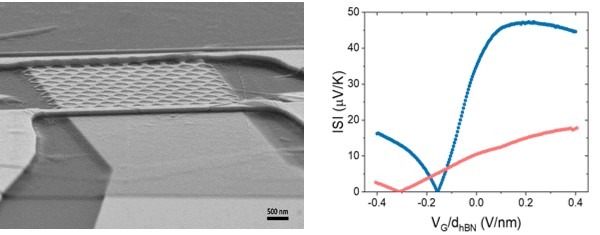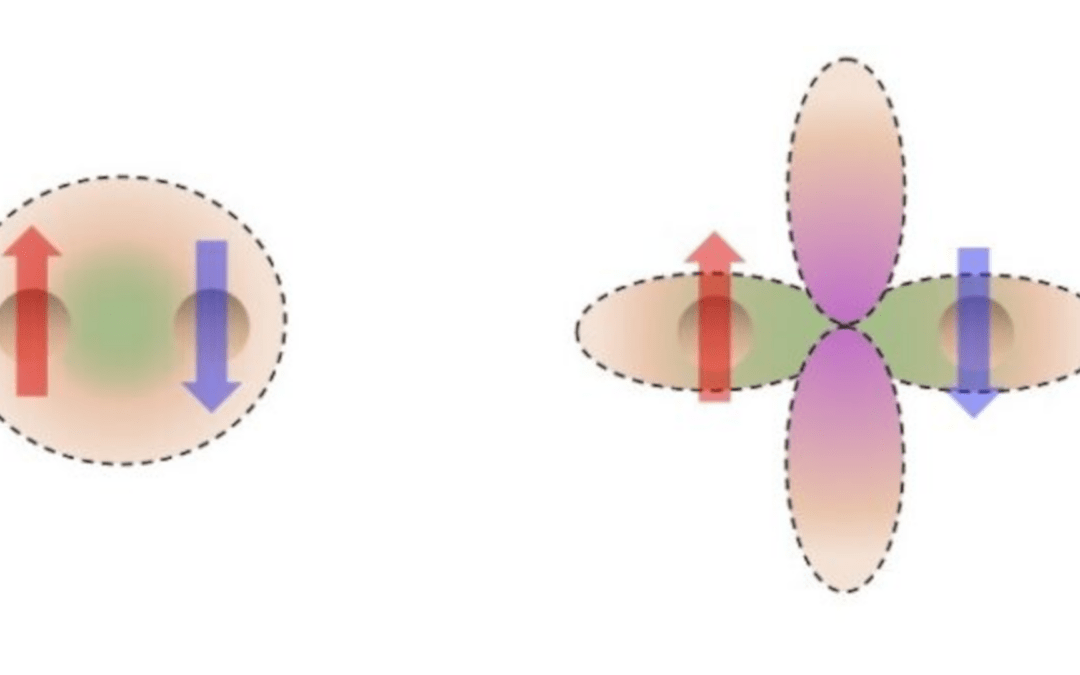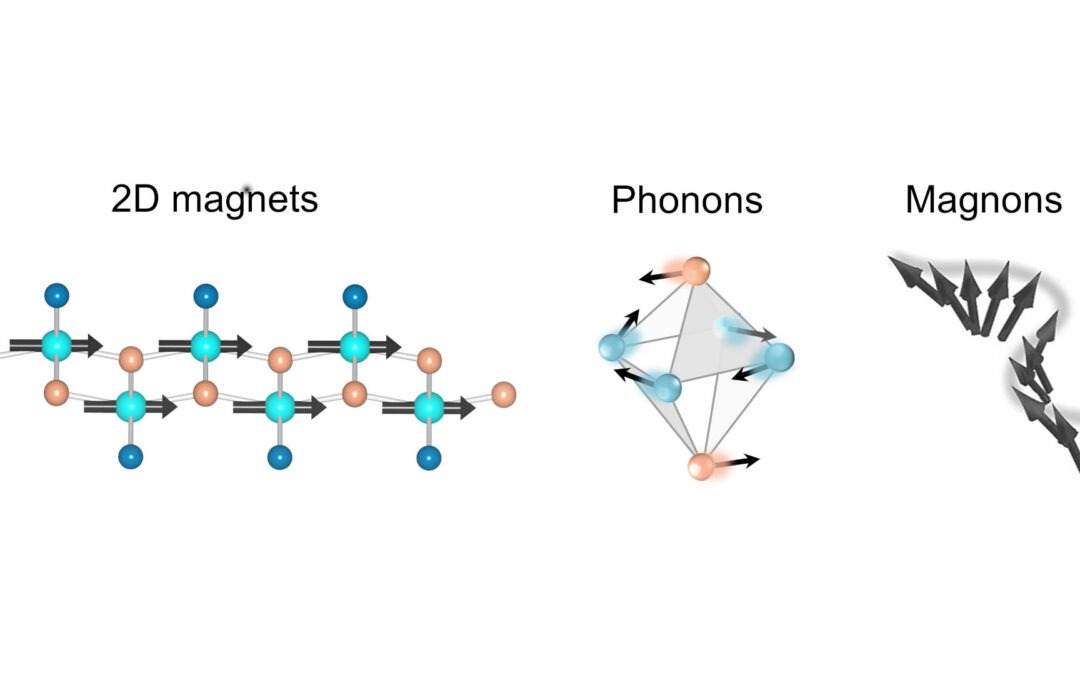
a) Scanning electron microscope image of a graphene-based nanostructured device for electric and thermoelectric measurements.
b) Absolute value of the Seebeck coefficient for nanostructured (bleu data) and pristine (pink data) multilayer graphene.
Laboratoire: MPQ (Matériaux et Phénomènes Quantiques), Université Paris Cité & CNRS
Adresse: Bâtiment Condorcet – 10 rue A. Domon et L. Duquet – 75013 Paris
Directeur de stage/thèse: Maria Luisa DELLA ROCCA
Tel: 01 57 27 70 13
e-mail: maria-luisa.della-rocca@u-paris.fr
Scientific project:
The main goal of the internship is to experimentally investigate the electric (s), thermoelectric (S) and thermal properties (k) of devices based on nanostructured graphene. Nanostructuring will be engineered by a network of holes, with 300-400nm diameter and 50-150nm edge width, aiming to reduce the phonon mean free path without affecting significantly the electron mean free path. The students will be involved in sample fabrication in clean room (dry transfer of the 2D material, e-beam lithography, etching, metal deposition …), electrical measurements (s, S) and modulated thermoreflectance measurements (k) (coll. INSP – Paris). The team has recently demonstrated the ability of achieving a complete thermoelectrical characterization of 2D materials-based devices4,5 and has already achieved promising preliminary results (see Fig.). The team’s expertise in the investigation of charge and spin transport in 2D materials and in clean room micro and nano fabrication techniques will be exploited in the project.
[1] A. Principi and G. Vignale, Phys. Rev. Lett. 115, 056603 (2015)
[2] P. Dollfus et al., J. Phys.: Condens. Matter 27, 133204 (2015)
[3] M. Buscema et al., Nano. Lett. 13, 358 (2013)
[4] S. Timpa et al., J. Appl. Phys. 130, 185102 (2021)
[5] M. Rahimi et al., Phys. Rev. Appl. 19, 034075 (2023)
Methods and techniques: micro‐fabrication in clean room, transport/optical measurements
Possibility to go on with a PhD: YES
Envisaged fellowship: EDPIF competition and/or PhD funding request submitted in projects
À lire aussi

TUPHO, pour la production à grande échelle de circuits photoniques intégrés
Le projet TUPHO est une initiative qui veut combler le fossé entre innovation en amont et production à grande échelle dans l’industrie des circuits photoniques intégrés (PICs). Il est porté par Hamidreza Neshasteh et Ivan Favero, membres de l’équipe Light and...

Manipulating unconventional superconducting states via anisotropic strain
Laboratoire: MPQ (Matériaux et Phénomènes Quantiques), Université Paris Cité & CNRSAdress: Bâtiment Condorcet – 10 Rue A. Domon et L. Duquet – 75013 ParisInternship/PhD supervisor: Yann GallaisTel: 0157276989e-mail: yann.gallais@u-paris.fr Scientific project:...

Towards light control of van der Waals magnets
Laboratoire: MPQ (Matériaux et Phénomènes Quantiques), Université Paris Cité & CNRS Adress: Bâtiment Condorcet – 10 Rue A. Domon et L. Duquet – 75013 Paris Internship/PhD supervisor: Niloufar Nilforoushan and Yann Gallais Tel: 0157276223 e-mail:...

Séminaires
2025-2026 MPQ general seminar series organized by Niloufar Nilforoushan and Valentin Cambier Prof. Sebastian Loth — Institute for Functional Matter and Quantum Technologies, University of Stuttgart, Germany Title: Coming soon Jan. 16, 2026 at 11:00 am — Salle Luc...
